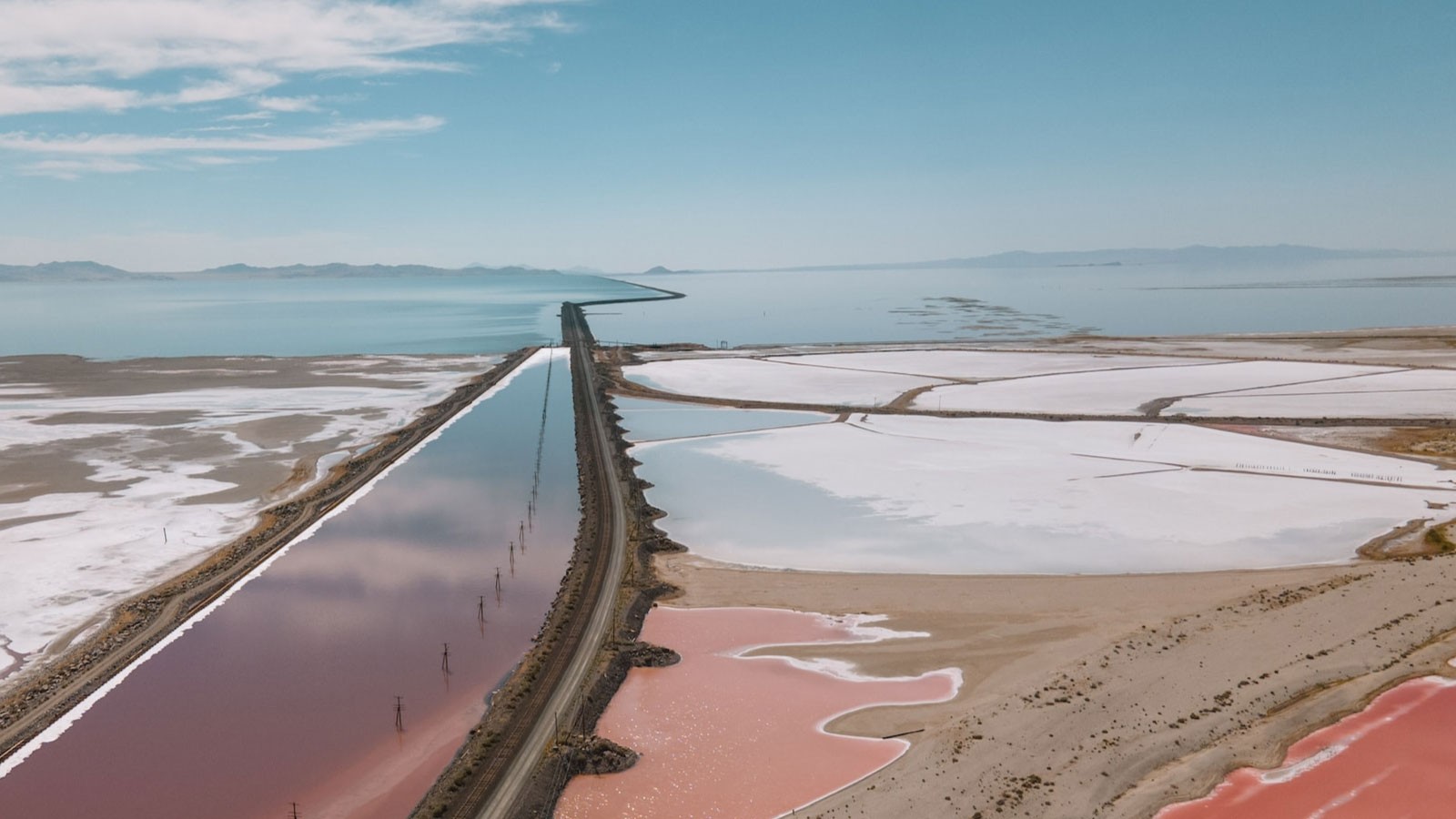All Invited to Student Capstone Presentation 'The Great Salt Lake: All Hands on Deck'
By Madison McGrath |
The Great Salt Lake. (Photo Credit: Urvish Prajapati on Unsplash)
Typically, a presentation of senior projects does not invite or draw a crowd. But few things about the Great Salt Lake can be considered “typical.”
This year, Utah State University’s Department of Landscape Architecture & Environmental Planning devoted many of its studio gatherings with students from freshmen to seniors and graduate students to understanding the many challenges threatening the Great Salt Lake and the communities and ecosystems connected to the lake.
Building on this academic year’s intense focus on the lake and surrounding communities and activities, the department invites all to its Great Salt Lake: All Hands on Deck presentation on Friday, April 21, from 10 a.m. to noon, in Fine Arts Visual Building (FAV) 210.
“Community-engaged learning is a powerful tool that partners students with stakeholders, and raises expectations and performance,” said David Anderson, LAEP professional practice professor. “It results in a process of discovery for everyone involved and that has been the case this year. Virtually every LAEP student learned far more than they expected about an incredibly complex and relevant problem – the potential multi-faceted demise of Utah’s Great Salt Lake.”
The department’s work this year has been possible with support from and collaboration with The Nature Conservancy — Utah, Weber Basin Water Conservancy District, the Janet Quinney Lawson Institute for Land, Water and Air, and the Great Salt Lake Advisory Council
Earlier this semester, the department’s seniors hosted an intensive, weeklong design charrette focused on many of these issues. During charrette week, 120 students and faculty wrestled with issues affecting the lake. As a result, seniors organized five teams to address planning and design solutions in three of the area’s four watersheds — Bear River, Weber River, and Jordan River.
“What became clear is that all citizens need to participate in helping solve the problems, which led to the title, ‘All Hands on Deck,’” said LAEP Associate Professor Todd Johnson. “Students need to know that they have the power to ask questions and find solutions to wicked problems such as the Great Salt Lake. We can think of no better opportunity to empower student landscape architects than by creating and presenting solutions to this existential threat.”
Specific presentations for the capstone event will be:
- Farmington Bay Waterfowl Management Area/Eastern Shore — prototypical community design for the new lake frontage
- Antelope Island Center for Research, Tourism, and “Schoolkids” — a long-term educational approach to environmental research, learning, and tourism.
- Jordan River Rehabilitation, South Salt Lake (Mill Creek confluence) — the new center of the Wasatch.
- Shoshone Bear River Massacre Memorial — with Darren Parry, former chair of the Northwestern Band of the Shoshone Nation. Environmental restitution at the new memorial site will restore some flow to the lake.
- Planning and Design Toolkit for Growth — appropriate measures for residential growth, involving residents and planners.
The capstone event will include the student-teams’ presentations and Q&A segments. For more information, contact the Department of Landscape Architecture and Environmental Planning at 435-797-0500.
WRITER
Madison McGrath
Development Research Assistant
College of Agriculture & Applied Sciences
(435)797-0500
Madison.mcgrath@usu.edu
CONTACT
David Anderson
Professional Practice Associate Professor
Department of Landscape Architecture and Environmental Planning
435-797-1984
David.Anderson@usu.edu
TOPICS
Environment 263stories Water 257stories Great Salt Lake 34storiesComments and questions regarding this article may be directed to the contact person listed on this page.







